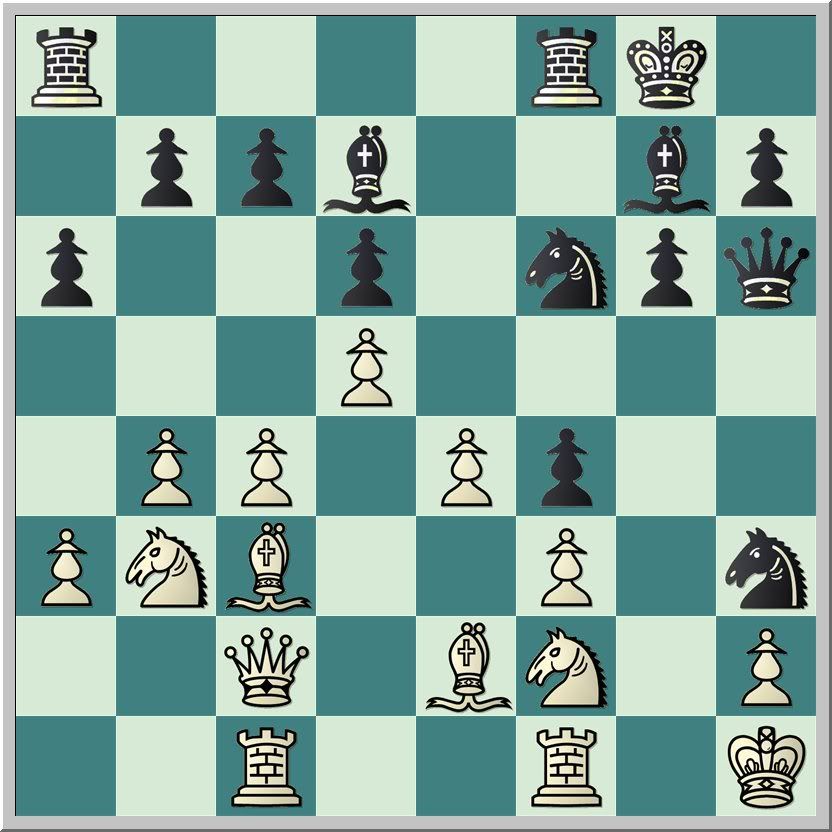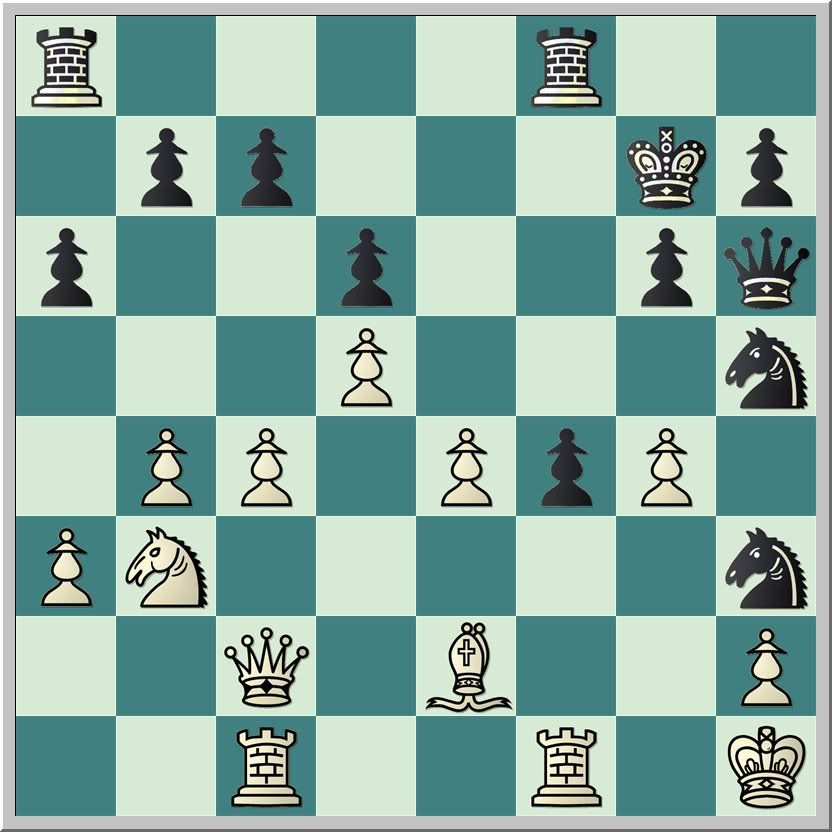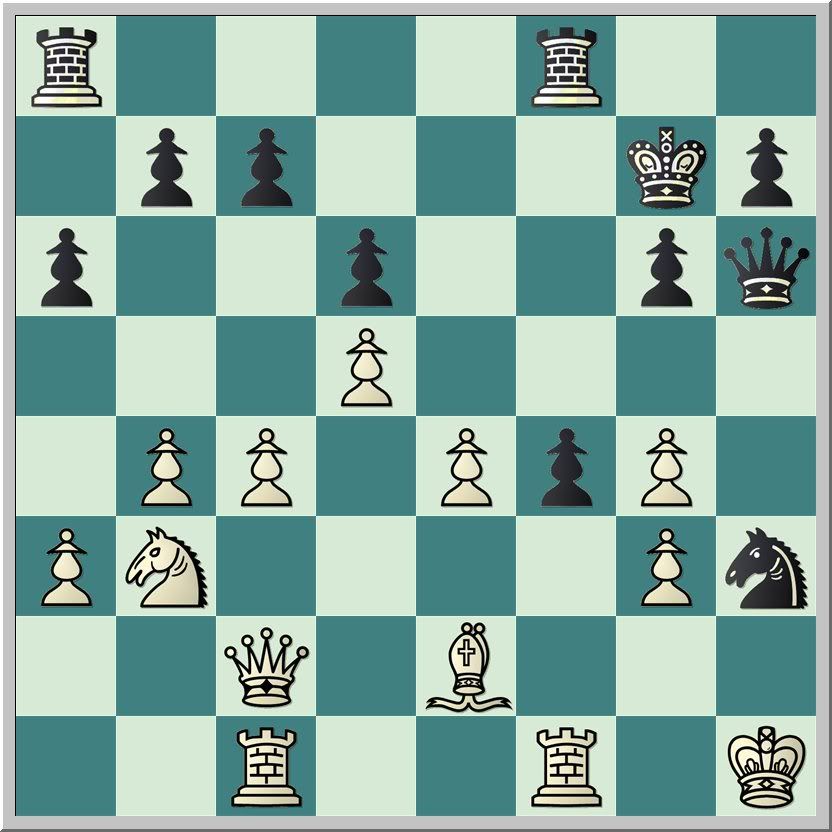Despite my inconsistent performance year after year, the gains over the past ten months have elevated me among the higher rated active players in my city. The top players have a responsibility to play in as many events as possible, donating their rating points to those able to take them. Raising their ratings only if they play without error.
David Griffin, who also has climbed roughly 100 points in the past year, was able to improve his rating a few more points at my expense, as he did in the touch move lesson in November.
There were two rounds last night in this game/45 event called Christmas Chaos. I played opening lines that are not my norm. As White, I played 1.e4, and an odd line of the c3 Sicilian--2.Nf3 before 3.c3. Against Griffin, I had Black and played the Dutch Defense.
After twenty minutes each, we reached this position for my move 24.
Black to move

I played 24...Nh5 to continue my plan behind the strange positioning of my queen on the h-file.
25.Bxg7 Kxg7 26.Ng4 Bxg4
I spent five minutes on this move, calculating not it, but my next one.
27.fxg4
Black to move

27...Ng3+! 28.hxg3
Black to move

Here I spent another seven minutes, running my clock down to just over six minutes remaining. I found the best move, but missed a checkmate in two on the next move.
Is the calculation easier without the pressure? Can you work out a clear win for Black?
I know the answer because I spent another thirty minutes with this position last night when I should have been sleeping.














OK, without setting up a board I'm thinking the following.
ReplyDelete29...fxg3 30) Qc3+, Kg8 31) Qxg3, Nf2++
32) Kg1 or g2, Qh1#
30) Rxf8 doesn't change anything
neither does
31) Bf3, Nf2++ 32) Kg1 or g2, Qh2#
31) Rxf8+, Rxf8 leaves you with the same reuslt.
It took me about 8 minutes to figure it out, and another 1 to type it.
But it's pretty easy when it's not your game.
Thanks Wang. One small problem with your analysis: after 32.Kg2, Qh1 is not checkmate because the rook can take the queen. The best line (for Black) that I see coming as a result of 29...fxg3 is 30.Qc3+ Kg8 31.Qxg3 Nf4+ 32.Qh2 Qxh2+ 33.Kxh2 Nxe2 restoring material equality and with a slightly better pawn structure. Black gains a tiny advantage, but does not have a clear win.
ReplyDeleteCant find a mate in two or three. I only know that fxg3 seems to be the starting move.
ReplyDeleteI played 28...Nf2+! and my opponent played 29.Kg2?? I could have finished the game 29.Qh3+ Kxf2 30.Qxg3#.
ReplyDeleteAfter 29.Kg1 (the only move), Black then can play 29...fxg3 with checkmate threats that White can parry only by giving up material.
The game continued 28...Nf2+ 29.Kg2?? fxg3?? 30.Qc3+ (only move) Kg8 31.Qxg3+-
Several moves later, my opponent offered a draw as we were both running low on time. He had the much better position so I accepted.
I was looking at Nf2+ The position is begging for the double check. When time is ticking it's so easy to miss the easy stuff.
ReplyDelete